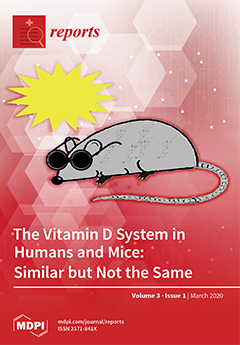Open AccessCase Report
Identification of the Profile of the Patients with Hemophilia B Eligible for Treatment with Nonacog Alfa Once-Weekly
by
Dorina Cultrera, Raimondo De Cristofaro, Paola Giordano, Silvia Linari, Silvia Macchi, Renato Marino, Angelo Claudio Molinari, Angiola Rocino, Cristina Santoro, Piercarla Schinco, Sergio Siragusa, Giuseppe Tagariello, Annarita Tagliaferri, Ezio Zanon and Massimo Morfini
Viewed by 2193
Abstract
This study aimed to identify the characteristics of patients with hemophilia B eligible for once-weekly treatment with Nonacog alfa. Methods: A survey was conducted in 14 Hemophilia (HCs) of Italy. These centers were given a questionnaire consisting of ten closed multiple-choice questions. The
[...] Read more.
This study aimed to identify the characteristics of patients with hemophilia B eligible for once-weekly treatment with Nonacog alfa. Methods: A survey was conducted in 14 Hemophilia (HCs) of Italy. These centers were given a questionnaire consisting of ten closed multiple-choice questions. The centers were asked: (a) the percentages of their hemophilia B (HB) patients undergoing replacement therapy, “On-demand”, or weekly prophylaxis, (b) the criteria guiding the monitoring of patients, the advantages according to the age of patients, and (c) the obstacles to prophylaxis. The percentage of patients receiving “On-demand” (OD) treatment or continuous prophylaxis (prophy) differed depending on patient age and the severity of the disease. Only 57% of HCs provided “On-demand” therapy to the mild HB patients, about 93% to moderate ones, of whom 43% on prophylaxis. About 78% of patients <6 years old, were on treatment in 9 out of 14 HCs, by prophylaxis 66.7% and 33.3% by On-demand. In the 6–18 age group, 90.1% of HCs treated HB patients with prophylaxis, 42.8% in the 18–30 age range. On-demand treatment was the therapy of choice in 61.5% of HCs for patients aged 30–65 years. In total, 64% of the HCs assigned the maximum score to bleeding frequency, especially in the <6 and 6–18 age groups. Bleeding severity was also taken into significant consideration, particularly in subjects up to 30 years old. The scores regarding venous access were distributed relatively evenly throughout all age groups. The majority of the centers attributed a medium-high score to treatment compliance, especially in the 6–65 age range. In actuality, 55% of HCs attributed pro-thrombotic comorbidity a low score in the 18–30 age group, whereas 81% gave pro-hemorrhagic comorbidity a high rating in patients aged >65 years old. Many centers assigned a medium-high score to the baseline concentration of FIX level at diagnosis in all age groups. Most HCs attributed a medium-high score to type of genetic mutation in the younger age groups. As for socio-cultural barriers and quality of life, the majority of respondents gave a medium-high score in all age groups. For periodic monitoring of patients receiving continuous prophylaxis, 59% of the centers reported using clinical assessment. With regard to prophylaxis administration method, the majority of hemophiliacs were given infusions twice weekly, while as regards to the dose of FIX concentrate delivered, 50% of the centers reported administering prophylaxis once-weekly at a dose ranging from 5–100 IU/kg in 10–50% of HB patients. Thus, 93% of the centers reported using a dose of 25–50 IU/kg for twice-weekly prophylaxis in 6–100% of the patients. The majority of centers (86%) believe that, in a program of early primary prevention, once-weekly treatment with nonacog alfa may represent an alternative strategy to dose escalation. The results show that patients with mild hemophilia, with functional musculoskeletal status and difficulties with venous access, are candidates for once-weekly prophylaxis with nonacog alfa. For such patients, this regimen can improve treatment compliance and quality of life.
Full article




